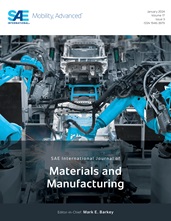With rising environmental concerns, developing lead-free solders is crucial for
sustainable electronics. Traditional lead-based solders, while effective, pose
health and environmental risks, prompt a shift to safer alternatives that retain
reliability. Sn-9Zn alloys, when alloyed with elements such as cerium (Ce) and
chromium (Cr), show enhanced mechanical and thermal properties suited for modern
electronics. This study examines the effects of Ce and Cr, and their combination
in Sn-9Zn solder alloy, analyzing improvements in microstructure, thermal,
wettability, and hardness properties. Microstructural analysis reveals that Ce
and Cr additions refine the alloy’s structure, benefiting performance.
Wettability testing shows that Sn-9Zn-0.05Ce achieves the lowest wetting angle,
while Sn-9Zn-0.05Ce-0.1Cr displays a balanced angle between Sn-9Zn-0.05Ce and
Sn-9Zn-0.1Cr. Differential scanning calorimetry (DSC) results indicate that
Sn-9Zn-0.05Ce has the lowest melting temperature, while Sn-9Zn-0.1Cr has the
highest, with Ce and Cr together reducing the melting temperature by 2.83°C from
the peak in Sn-9Zn-0.1Cr. Apart from this, the Vickers microhardness test
reveals the highest hardness in Sn-9Zn-0.05Ce-0.1Cr with 19.62 HV, underscoring
the strengthening effects of Ce and Cr. The outcomes suggest Ce and Cr alloying
as a promising approach to enhance the performance of lead-free solders in
eco-friendly electronics.
